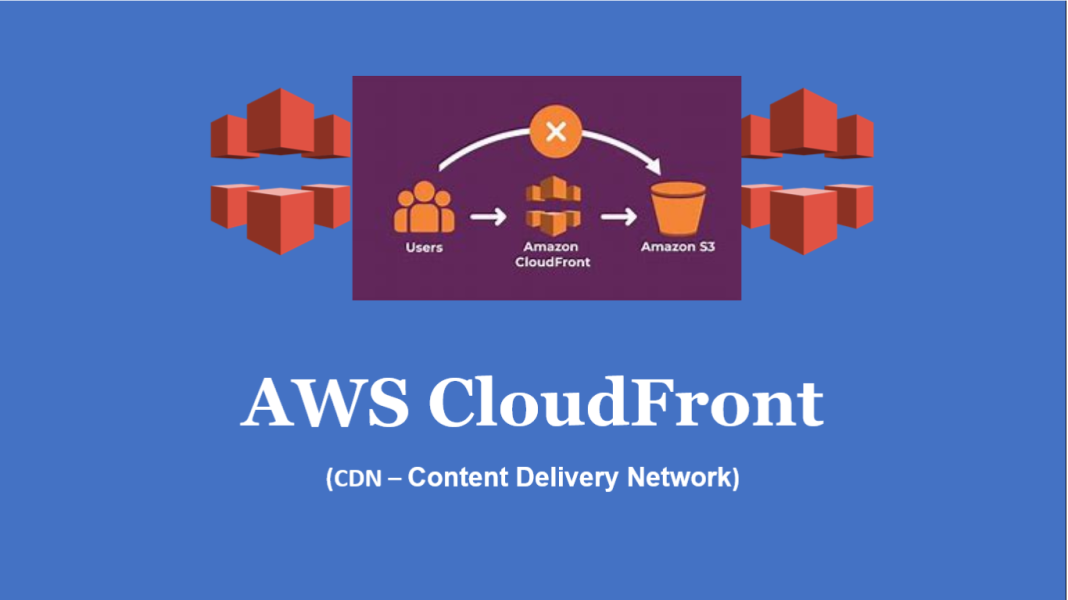Last updated on April 16th, 2024 at 11:41 am
Amazon CloudFront is a content delivery network (CDN) service provided by Amazon Web Services (AWS). It enables you to distribute your content, such as web pages, videos, images, and other assets, globally with low latency and high data transfer speeds. This guide will walk you through the key features and steps to set up and optimize Amazon CloudFront for your specific use case.
Table of Contents
1. Introduction to Amazon CloudFront
Overview
Amazon CloudFront is a globally distributed CDN that accelerates the delivery of your content by caching it at multiple edge locations around the world. This minimizes latency and ensures a faster and more reliable user experience.
Benefits
- Improved Website and Application Performance
- Global Reach and Scalability
- Secure Content Delivery
- Integration with Other AWS Services
- Cost-Effective
2. Key Concepts
Distribution
A CloudFront distribution is the main configuration entity, representing a set of content and server locations. There are two types: web and RTMP (for media streaming).
Edge Locations
These are the data centers around the world where CloudFront caches copies of your content. Requests are automatically routed to the nearest edge location.
Origin
The origin is the source of your content, which can be an Amazon S3 bucket, an HTTP server, or other AWS resources.
Cache Behavior
Defines how CloudFront handles requests and decides whether to serve the content from the cache or fetch it from the origin.
3. Getting Started
Sign in to AWS Console
Go to the AWS Management Console and sign in with your credentials.
Create a CloudFront Distribution
- Navigate to the CloudFront service.
- Click on “Create Distribution.”
- Choose the appropriate distribution type (web or RTMP).
- Configure the settings, including the origin and distribution settings.
- Review and confirm your settings.
- Click on “Create Distribution.”
Configure Distribution Settings
Fine-tune your distribution settings, including cache behavior, origin settings, and more, based on your specific requirements.
4. Customizing CloudFront Behavior
Alternate Domain Names (CNAMEs)
Map your own domain (e.g., cdn.yourdomain.com) to your CloudFront distribution using CNAMEs for a branded experience.
SSL/TLS Certificates
Secure your content delivery by configuring SSL/TLS certificates for your custom domain.
Access Control
Control who can access your content by configuring access policies, signed URLs, or cookies.
Logging
Enable logging to track user requests, diagnose issues, and analyze usage patterns.
5. Optimizing Performance
Caching Strategies
Configure caching behaviors to maximize the use of CloudFront’s edge locations and reduce the load on your origin.
Content Compression
Enable automatic content compression to reduce the size of your files and speed up content delivery.
Dynamic Content Acceleration
Utilize features like Lambda@Edge to customize and optimize content dynamically.
Content Delivery Optimization
Leverage CloudFront’s smart routing and automatic failover to ensure high availability and optimal content delivery.
6. Security Best Practices
Restricting Access with Signed URLs and Cookies
Securely control access to your content by using signed URLs or cookies.
Using AWS WAF with CloudFront
Integrate AWS WAF (Web Application Firewall) to protect your applications from common web exploits.
Origin Access Identity
Enhance security by restricting direct access to your origin and allowing only CloudFront to fetch content.
7. Monitoring and Analytics
CloudFront Metrics
Monitor key metrics such as request and data transfer rates, error rates, and cache hit ratios.
AWS CloudWatch Alarms
Set up alarms based on CloudFront metrics to receive notifications for unusual patterns or issues.
CloudFront Access Logs
Analyze access logs to gain insights into user behavior, troubleshoot issues, and optimize performance.
AWS CloudFront Reports
Access detailed reports to analyze the performance, distribution, and viewer activity.
8. Troubleshooting
Common Issues and Solutions
Refer to AWS documentation and forums for common CloudFront issues and their solutions.
CloudFront Diagnostics Tools
Utilize CloudFront diagnostics tools, such as CloudFront Real-Time Logs and CloudFront Security Knowledge Base, for advanced troubleshooting.
9. Integration with Other AWS Services
Amazon S3
Efficiently integrate CloudFront with Amazon S3 for scalable and cost-effective content storage and delivery.
AWS Lambda@Edge
Use Lambda@Edge to run custom code at CloudFront edge locations, enabling dynamic content customization.
Amazon EC2
Integrate CloudFront with Amazon EC2 instances to deliver dynamic, personalized content.
AWS Elemental Media Services
Enhance media streaming capabilities by integrating CloudFront with AWS Elemental Media Services.
10. Best Practices for Cost Optimization
Pricing Structure
Understand the CloudFront pricing model and choose cost-effective configurations based on your usage patterns.
Cost-effective Configuration
Optimize your CloudFront distribution settings to minimize costs while maintaining performance.
Usage Analysis and Optimization
Regularly analyze CloudFront usage reports and adjust configurations to optimize costs and performance.
By following this guide, you’ll be able to harness the power of Amazon CloudFront to deliver your content globally with speed, security, and cost-effectiveness.



